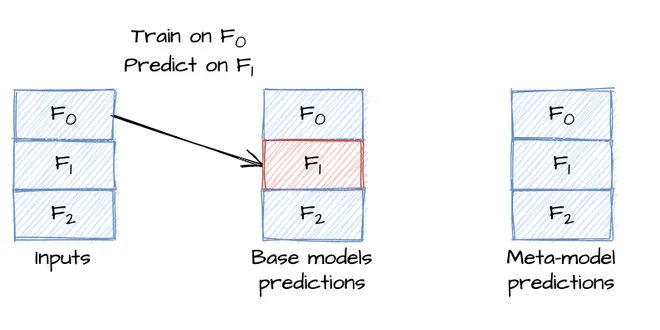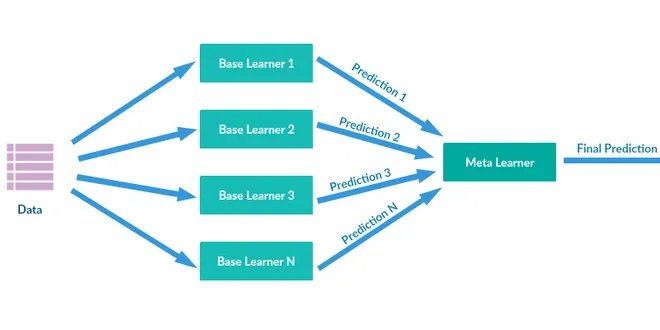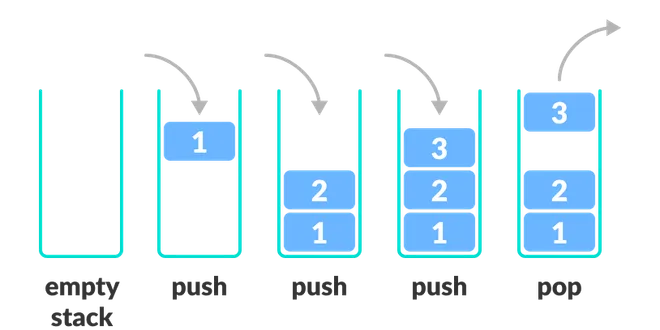Stacking
Stacking, or stacked generalization, is an advanced ensemble learning technique in machine learning that combines multiple predictive models to improve overall performance. By leveraging the strengths of various base models, stacking creates a meta-model that learns to make predictions based on the outputs of these individual models. This approach enhances accuracy and robustness, particularly in complex problems where different models may capture different aspects of the data. Stacking typically involves training base models on a training dataset and then using their predictions as features for the meta-model, which ultimately predicts the target variable.

Stacks and queues
Stacks Definition A stack s s s is a data structure that deals with elements s 1 , . . . , s n s_1, ..., s_{n} s 1 , ... , s n in a Last In First Out (LIFO) order. In order to do that, it uses...
📚 Read more at Super Study Guide🔎 Find similar documents

The stacking ensemble method
If you like or want to learn machine learning with scikit-learn, check out my tutorial series on this amazing package: Yoann Mocquin Sklearn tutorial View list 6 stories All images by author. Stacking...
📚 Read more at Towards Data Science🔎 Find similar documents

What happened when I used Stacking() on the Kaggle Titanic competition
Stacking is a type of ensemble machine learning algorithm. This function in sklearn library combines the best predictors from two or more functions in library. The benefit of using stacking is that…
📚 Read more at Python in Plain English🔎 Find similar documents

A Practical Guide to Stacking Using Scikit-Learn
Stacked generalization, also known as stacking, is a method that trains a meta-model to intelligently combine the predictions of different base-models.
📚 Read more at Towards Data Science🔎 Find similar documents

Stacks
What is a Stack? In Java, Stacks are a LIFO (Last In, First Out) Data structure for objects. Stack API Java contains a Stack API with the following methods Stack() //Creates an empty Stack isEmpty() /...
📚 Read more at Essential Java🔎 Find similar documents

How to properly validate a model when stacking
Stacking is a methodology for combining machine learning models. Having base models, one uses their predictions as input of another model called a meta-model. It’s very frequently used when accuracy…
📚 Read more at Towards Data Science🔎 Find similar documents

Machine Learning Model Stacking in Python
Stacking is a type of ensemble learning wherein multiple layers of machine learning models are used for final predictions.
📚 Read more at Towards AI🔎 Find similar documents

My Journey to Learning Data Structures from Scratch — Stacks
Stacks are literally what the word “stack” means — a Pile of something or something put on top of one another. So, how will you get something that is at the bottom of the pile? You will have to…
📚 Read more at Level Up Coding🔎 Find similar documents

Understanding Stacking in NumPy
Member-only story Understanding Stacking in NumPy Punyakeerthi BL · Follow Published in Python in Plain English · 4 min read · Oct 27, 2024 -- Share NumPy is a powerful library for numerical computing...
📚 Read more at Python in Plain English🔎 Find similar documents

A brief overview of Stack in Python
A stack is a collection of objects that are inserted and removed according to the Last‐In, First‐Out (LIFO) principle. Refer to the image above and the exact principle to remove objects. We remove…
📚 Read more at Analytics Vidhya🔎 Find similar documents

Stack ’Em up With Stacks
One of the most intuitive computer science data structures is a stack. This data structure is widely used in, but not limited to, your compiler, your application memory, and in some of your function…
📚 Read more at Analytics Vidhya🔎 Find similar documents

Automate Stacking In Python
This article describes the utilization of the package vecstacks to automate workflows in stacking to improve machine learning performance and workflow
📚 Read more at Towards Data Science🔎 Find similar documents

